Is The D7000 A Full Frame Camera
The Nikon D7000 is a mid-tier DSLR with a loftier-resolution 16.two MP DX-format CMOS sensor and a powerful EXPEED 2 processor at its middle. I had a chance to test out several copies of the D7000 over a period of 3+ months. Due to my busy schedule and very loftier demand on the photographic camera, I was not able to obtain a re-create earlier to exam. I actually thought information technology was a skillful affair to look considering I did not want to get one from the initial production (which seemed to be rushed, resulting in lots of bad samples out in that location).
Ever since the Nikon D7000 was released, I have been getting many questions from current and potential buyers, asking about back-focus issues, overexposed images, bad video quality, autofocus bug, paradigm quality at low and high ISOs and hot pixels. For this review, I made a note to myself to test the camera against each of the listed potential problems and report on my findings.
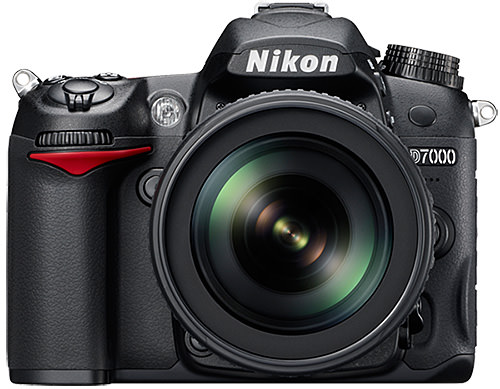
Annotation that the D7000 is at present discontinued, and the newest photographic camera in this lineup, equally of September 2018, is the Nikon D7500.
Camera Construction and Handling
In terms of construction, the Nikon D7000 sits between the Nikon D90 (all plastic) and the Nikon D300 (all magnesium alloy) – the height and the rear of the camera is made of magnesium blend textile, while the front and the bottom parts are plastic. Nikon wanted to brand the camera tough without adding too much weight, which is why only the most used office of the camera got the extra protection. And it was certainly a practiced decision, considering the D7000 is only 70 grams (ii.5 ounces) heavier than the D90. Hither is an illustration of the D7000 frame (front and dorsum):
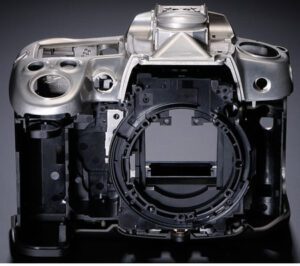
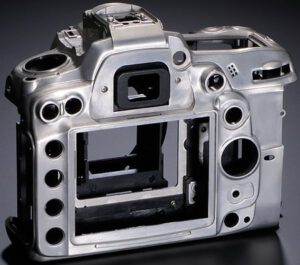
In terms of handling, the D7000 balances and fits nicely on hands, very similar to the Nikon D90. If you are planning to use the camera with large lenses similar Nikon 24-70mm f/2.8G, and so I would recommend adding the new MB-D11 battery grip for additional balance. Speaking of which, the new EN-EL15 bombardment and the MB-D11 are not something I am thrilled about. I understand that the new EN-EL15 is ameliorate, lighter, more compact and more powerful than the EN-EL3e, only then it means that non only I cannot share batteries with my D700, only also I have to carry an extra charger equally well. Add the new MB-D11 and at present I accept to carry two unlike camera grips on acme of that. So if you already ain the Nikon D300 or the Nikon D700 and y'all are looking at the D7000 every bit a backup body, continue all this in mind. I personally would not purchase a D7000 for this reason alone. Unless the upcoming Nikon D400/D800 camera bodies are also going to utilise the same battery and grip, this is not a smart move by Nikon. On the positive side, I like the new battery rubber holder on the D7000 body, which helps prevent the battery from dropping on the ground when the battery door is opened. I'1000 sure Nikon will add this holder going forwards to other Nikon DSLRs.
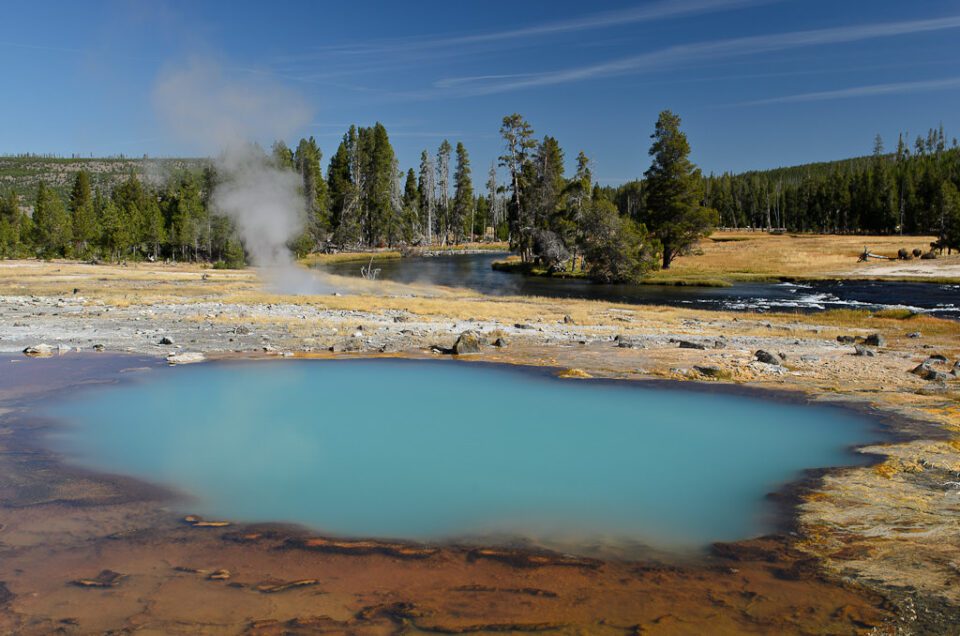
The outside of the camera is completely redesigned and although you can see quite a few similarities with the Nikon D90, there are some newly introduced changes that are non present on any other Nikon DSLRs. The well-nigh notable modify is the two-step/dual top mode punch that allows the photographer to not simply set unlike photographic camera modes merely also control shutter release modes. Nikon simply took the lesser office of the left top punch from the D300s/D700 and the mode dial from D90 and stacked them together.
I personally liked this new "dual dial", because it gives plenty of command over how the camera functions in one place, without having to go through the photographic camera card or other additional buttons. On the other hand, I did manage to accidentally alter the camera mode a few times when I was shooting – I wish Nikon had fabricated the elevation punch a little more than stiff to minimize such accidents. Some other welcomed button alter is the mode Liveview is triggered. Instead of simply pressing an "Lv" button like on the D90 or D300s, now in that location is a Live View lever with a ruddy recording button in the center. I'g sure those of us who shoot video will really welcome this modify and I hope Nikon will use the same switch on the upcoming Nikon DSLRs.
The AE-L/AF-Fifty button is placed similarly as on the D90 – further away from the rear rotating punch. I wish it was closer or in that location was a dedicated AF-ON button similar on the pro-level bodies considering I usually move the focusing activity from the camera shutter to a dedicated push button (for focusing and recomposing shots). Lastly, the focus switch located on the forepart left side of the D7000 has besides been redesigned – at that place is at present a button in the middle of the switch that allows changing autofocus modes – also a welcomed change that gives faster and simpler command to photographers. The Nikon D7000 also comes with two SD card slots, and you can select how yous desire to store data on those two card slots, but like on the pro-level bodies. Overall, I am very pleased with how the D7000 is designed.
As for weather and dust protection, Nikon says that the D7000 is sealed to withstand tough weather and dusty environments. I did not accept a chance to test it in a dusty environs, simply I did take it with me to shoot in very cold temperatures beneath zero. The camera functioned very well without any bug, but the battery did not terminal very long, which is normal, because batteries do drain fast in very common cold temperatures.

Nikon D7000 Specifications
- Sensor: 16.2 MP DX-format CMOS
- Continuous Shooting Speed: half dozen FPS
- Metering Sensor: 2,016-pixel RGB (3D Color Matrix) sensor
- Pentaprism: Optical Viewfinder with approx. 100% frame coverage and approx. 0.94x magnification
- Storage: Dual SD Carte Slots with SD, SDHC and SDXC memory carte du jour compatibility
- Wink: Built-in Speedlight flash with i-TTL and Wireless Commander support
- Battery Grip: Optional MB-D11 multi-power pack
- Picture Controls: Standard, Neutral, Vivid, Monochrome, Portrait and Landscape
- Virtual Horizon Graphic Indicator: Yes
- Video: Full 1080p Hard disk drive Movie capability with Full Fourth dimension Autofocus and external stereo microphone jack (up to 20 minutes of recording fourth dimension)
- ISO Sensitivity: 100 to 6400, expandable to 25,600 (Hi2)
- AF: 39 bespeak AF System with ix middle cross-type sensors
- Construction: Magnesium-alloy top/rear covers and weather condition and dust sealing
- Shutter Immovability: 150,000 bicycle-rated shutter system
- LCD: 3″ 921,000-dot Super-Density LCD Monitor with 170 degree viewing
- Battery: EN-EL15 (850+ shots)
- Built-in HDMI Connexion: Aye
- Scene Modes: Portrait, Mural, Child, Sports, Close-up or Night Portrait
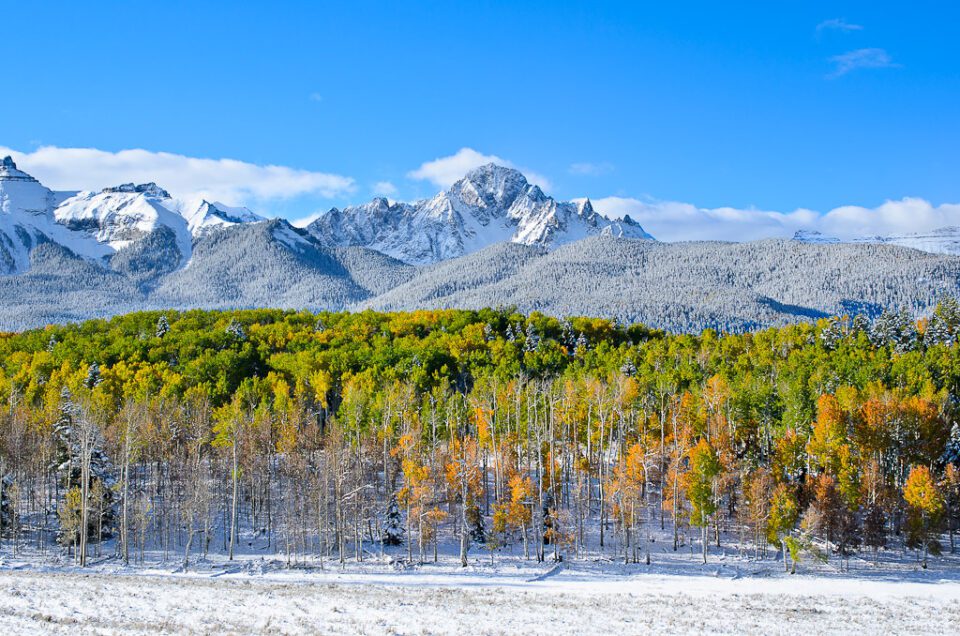
Detailed technical specifications for the Nikon D7000 are available on Nikonusa.com.
Image Sensor and the new Expeed Processor
The most exciting new alter for a gear-head similar me, is the more powerful Expeed ii camera processor, along with the new 16.two MP (megapixel) high-resolution camera sensor. Although I adopt better epitome quality over a higher number of pixels, the jump from 12 MP to 16 MP is certainly proficient for folks like me who are into landscape and wildlife photography. A college resolution sensor means larger prints and more than cropping opportunities when photographing wildlife. Nikon has been quite successful in keeping high ISO dissonance amounts low while keeping image quality standards high in their latest generation DSLRs with more megapixels. With a 4 megapixel spring, does the Nikon D7000 keep upwardly with the paradigm quality of the 12 MP Nikon D90? The answer is farther downwards in this review, where you volition discover a detailed comparison between the Nikon D7000, D90, D3100, and D700. In short, the Nikon D7000 is Nikon'southward best DX sensor thus far.
I have received numerous negative emails and comments from D7000 owners well-nigh hot pixels. Many of the D7000 owners seem to recall that the D7000 sensor, in particular, has a hot/stuck pixel issue. I will write a separate article on different types of pixel issues on sensors because in that location are hot pixels, dead pixels and stuck pixels (which all mean different things). The one-pixel issue most people report well-nigh is a brightly-colored abrasive pixel that appears in random parts of the prototype when the paradigm is shot at loftier ISOs in a higher place 400 and/or at very long exposures. If yous are too worried nigh this problem, you lot should not be, considering EVERY sensor has pixel problems.
I remember when I bought my Nikon D80, I was so annoyed past hot pixels, that I sent the camera to Nikon for service. They remapped the hot/stuck pixels for me (which merely showed upward at ISO 800 and upwardly), but more similar pixels started appearing after a while. Hot/stuck/dead pixels are normal – they happen everywhere. Your PC monitor might have a stuck/dead pixel, your TV might have a couple and photographic camera sensors are not immune from this problem either. When you lot deal with millions of pixels in a tiny expanse, some of them will eventually die or malfunction. Every DSLR I accept used so far had pixel issues. My Nikon D3s has both hot and stuck pixels. Why do I non worry or intendance about these pixel bug? Because some of them eventually disappear and the ones that stay are automatically removed/mapped out by Lightroom/Adobe Camera RAW as soon every bit I open up the image.

Now information technology is a dissimilar story if yous are getting stuck pixels at low ISOs and fast shutter speeds – that should not unremarkably happen or if the number of these bad pixels is unusually high. If you shoot in JPEG and yous are annoyed by this, merely send the photographic camera dorsum to Nikon and they will remap those pixels for you. Merely exist warned – your camera will eventually develop more of those bad pixels overtime. One more than thing to note – hot pixels show up a lot more in hot environments. Endeavor taking a long exposure shot after shooting a long video and I guarantee that y'all volition see plenty of those hot pixels. And then end worrying well-nigh those darn pixels! You lot tin can't come across any in my images that I post here, can you? Shoot in RAW and let the software deal with bad pixels. You should be worried nearly sensor dust more than than hot pixels.
Source: https://photographylife.com/reviews/nikon-d7000
Posted by: cresswellthaton1982.blogspot.com

0 Response to "Is The D7000 A Full Frame Camera"
Post a Comment